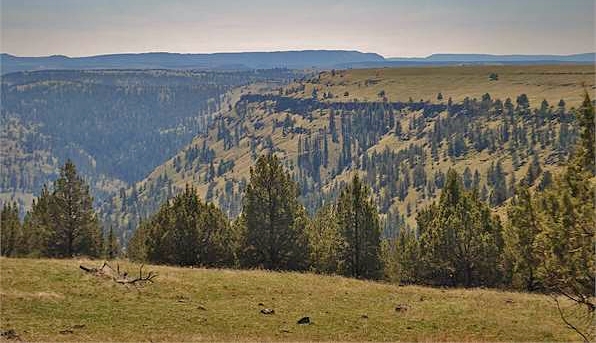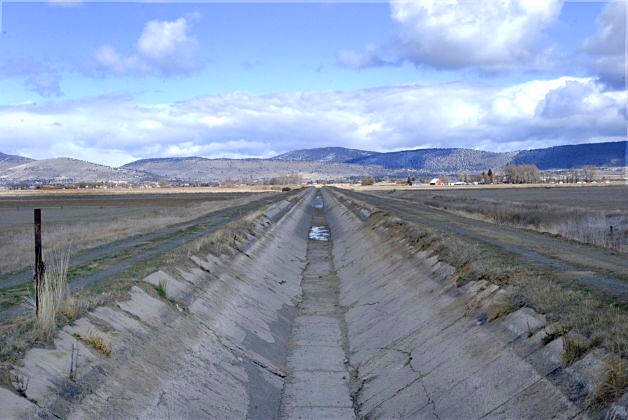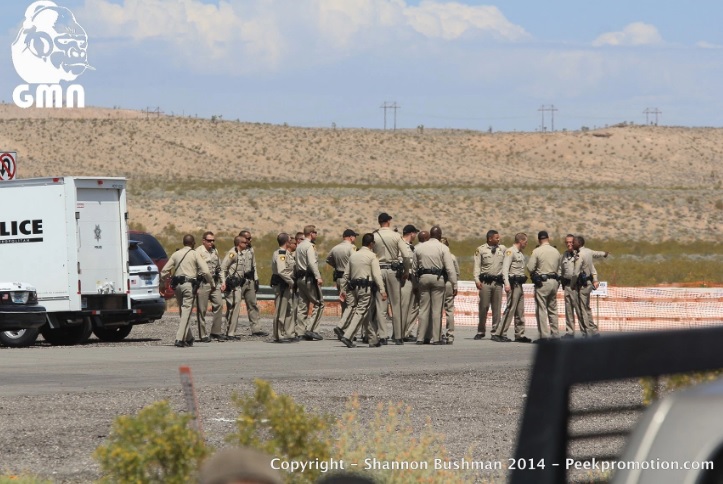Although Millard County is the literal definition of rural, “urban” values increasingly seem to dominate local thought processes and resulting public policy. Despite lip service to the contrary, one of the biggest and most troubling aspects of those urban values is a growing lack of recognition and respect for basic, fundamental property rights.
Todd Macfarlane
Among other things, basic property rights are a growing point of conflict in the world we live in. There seems to be a growing number of people whose disregard, lack of recognition and respect for fundamental property rights causes them to increasingly seek to infringe them, creating increasing local contention and conflict across this land.
Examples are myriad, and happen on a weekly basis across this country, but a recent example here in my home county — Millard County, Utah — helps highlight the issues:

With 6500 square miles (bigger than several states), Millard County is a large, rural, agricultural county. Although there are some mountains, including the Pahvant Mountain Range along the eastern edge of the county, the vast majority of the county is desert, inhabited primarily by livestock and wildlife, with very sparse human population. With less than 15,000 county residents, and a population density of 1.9 people per acre, we have one of the lowest population densities in the state (ranked 25th out of 29 counties in population density). But the vast majority of county population is concentrated in a few areas, leaving the vast majority of the county with no residential habitation. Of land ownership in Millard County, 75% is owned by the federal government, with about 10% state ownership, leaving less than 15% in private ownership, a significant amount of which is irrigated farm ground..
Smithfield Foods, a division of Murphy Brown, LLC., is seeking to expand its industrial hog finishing operations into Millard County from adjoining Beaver County, where it and its predecessors have been operating as Circle 4 Farms, for about 20 years. As part of that expansion, Smithfield is seeking a zone change to secure a conditional use permit to construct 16 new grow barns on the Millard County side of property Smithfield owns that straddles the Millard/Beaver County line. This is a very remote area, approximately 50 miles south of Deseret, where most of the project’s apparent opponents live. But with large wind farms and geothermal power plant(s) in the area, along with seemingly ample groundwater (the area is still open to new appropriation), as well as Highway 257 and the Union Pacific Railroad passing through, there appears to be a good combination of natural resources and essential infrastructure for efficient industrial hog production. Just to be clear, this is what would be what is often referred to as a “Factory Farm.”
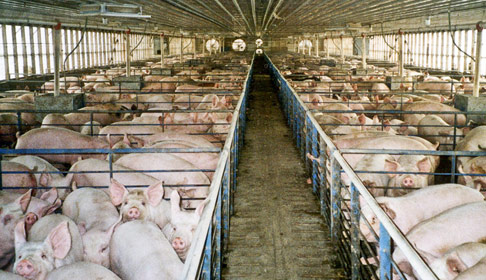
Back in November, 2016, the Millard County Planning Commission held a public hearing regarding the zone change application. As may often be the case, apparently not many people were paying attention, and few showed up at the public hearing. The planning commission considered the substantive merits of the application and determined that it met the requirements for a zone change under the Millard County Land-use Ordinance, and voted to recommend the proposed zone change to the Millard County Commission for approval. Construction of the barns would still require conditional use permits.
Following the public hearing before the planning commission, however, apparently more people became aware of the proposed projects, and things really started heating up in terms of public opposition. Consequently, in addition to another, required public hearing before the Millard County Commission on Thursday, January 26, 2017, the Millard County Commission went the extra mile and held multiple additional informational meetings to provide the public the opportunity to learn more about the project, prior to the public hearing.
As is often the case, apparently word about the proposed projects spread, because the informational meetings were well-attended. In addition to just asking questions and trying to learn more about the project(s), however, some members of the public began to voice active opposition, and sought to lead an opposition movement. Because there had been essentially no public opposition at the planning commission hearing, the growing opposition seemed to catch the Johnson family somewhat by surprise. As the meetings continued, attendance numbers grew, and the opposition grew more vocal.
A lot of questions and concerns had to do with water, including sources, amounts, groundwater quality protection, etc. According to the information presented, each barn will use approximately ten (10) acre feet per year. So for Johnson’s four proposed barns, that would be 40 AF per year, which is roughly the equivalent of irrigating 10 acres of alfalfa. For Smithfield’s 16 barns, that would be 160 AF. But Smithfield represented that it had groundwater rights in area of the Millard/Beaver County line totaling over 2000+ AF of water rights. And the statutory water policy of the state of Utah is that water rights must be put to beneficial use – in other words, use it, or lose it.
But besides creating new jobs capable of feeding and supporting families, and additional property tax revenue in the amount of hundreds of thousands of dollars/year, residents said they couldn’t see any other “upside” or benefits of the project to the Millard County Community (obviously, they don’t know about Factor 7 – the multiplier effect of 7 times that occurs when money is injected into a local, rural economy), they wanted to know what the benefit or upside would be to the “community” in approving the zone change and allowing the project(s) to move forward. Based on their perception of risks versus lack of community benefits, they voiced vocal opposition to the project(s).
At the final public hearing, a group of Millard County residents who live at least 50 miles away from the proposed project spoke out in opposition to the Smithfield zone change, and presented a signed petition expressing opposition to the zone change. They said because they were opposed to Smithfield’s industrial production practices, the zone change should not be approved, and Smithfield should not be allowed to expand or move forward in Millard County.
Those are the basic facts. What follows is commentary. So now, we’ll take the basic facts, and “discuss” the issue(s).
I will say at the outset that personally, I’m no big fan, let alone advocate of industrial agriculture (at the same time I’m not necessarily any major opponent of industrial agriculture either). But I am an advocate for fundamental, inalienable rights, including property rights. When it comes to the concepts of freedom and property rights, what is good for the goose is good for the gander. It’s about principle, not personality.
As a personal preference and choice in our family, we try to produce as much of our own food as possible. That’s why, among other things, we have a family milk cow, laying hens, and produce and harvest the vast majority of the protein (meat) we consume. As proprietors of a local Farmers’ Market, we are also big proponents of what has come to be referred to as “Alternative Agriculture,” including the “Food Freedom Movement,” and “Buy Local,” which includes an emphasis on local food production, consumption, and direct, personal relationships with food producers, via direct marketing. But food freedom is just that – freedom to produce and consume food that corresponds with our individual tastes and preferences without unreasonable governmental interference, and having those tastes and preferenced dictated by government or the so-called “will of the majority” – whatever those tastes and preferences are. Again, when it comes to the concepts of freedom and property rights, what is good for the goose is good for the gander.
What I have learned from personal experience and observation is that small, local, food freedom efforts can encounter just as much opposition as large-scale factory farming — even more in many cases. Recent examples of such opposition include Utah’s cow-share legislation in 2015, proposed “Food Freedom Bill” legislation in 2016, and efforts to locate a small, grass-fed, raw milk micro-dairy near Kanosh.
I also recognize that we now live in a nation of 300,000,000+ people, and a world of six billion plus people. And every single one of them wants to be able to eat. Everybody wants/needs the basic necessities of life, including food, fiber, shelter, etc. And people want to be able to afford to eat – and ideally, many of them want to be able to eat as inexpensively as possible. And, increasingly, people seem to want to have the luxury of a little more protein in their diet. As it turns out, protein is a fundamental component of a healthy diet, but is also one of the most expensive, and challenging to produce, with multiple additional, complicated steps in the production/processing chain.
This is an issue that is frequently discussed by my good friend Trent Loos, on Rural Route Radio. Trent often talks about the issues and fundamental and growing conflicts between “Rural” and “Urban” America. (For an interesting recent episode of Rural Route Radio addressing related issues, CLICK HERE). And what I came to realize long ago, is that the issues and conflicts between rural and urban America exist right here in rural America – even in a large, rural agricultural county like Millard County, Utah.
Although Millard County is the literal definition of rural, “urban” values increasingly seem to dominate local thought processes and resulting public policy. Despite lip service to the contrary, one of the biggest and most troubling aspects of those urban values is a growing lack of recognition and respect for basic, fundamental property rights.

According to common definitions and explanations, fundamental, “inherent”, inalienable rights are generally those rights considered to have been bestowed on individuals, at birth (or conception) by a Divine Creator. That is why they are often referred to as “God-given” Rights.
Here in the State of Utah, the Preamble to our state constitution expressly recognizes this:
“Grateful to Almighty God for life and liberty, we the people of Utah, in order to secure and perpetuate the principles of free government, do ordain and establish this Constitution
Our state constitution also says some other interesting things. Article 1, Section 1 of the Utah State Constitution (Inherent and Inalienable Rights) includes a “Declaration of RightAll men have the inherent and inalienable right to enjoy and defend their lives, and liberties, to acquire, possess and protect property; to worship according to the dictates of their consciences; to assemble peaceably, protect against wrongs, and petition for redress of grievances, to communicate freely their thoughts and opinions, being responsible for the abuse of that right.”
The Utah State Constitution clearly identifies property rights as fundamental rights.
And Article 1, Section 27, states: “Frequent recurrence to fundamental principles is essential to the security of individual rights and the perpetuity of free government.”
Consistent with these basic, fundamental principles, according to the Utah State Republican Platform, “The [proper] function of government is not to grant rights, but to protect the inalienable, God-given rights of life, liberty, property, and pursuit of happiness.”
But contrary to these stated ideals, an increasing amount of public policy is going in the opposite direction, embracing instead an increasingly, urban, socialistic, communitarian mindset that insists that these clearly recognized, individual, inalienable rights must be “subject to” or “balanced” against “public” interests, or so-called rights of the community.
In a nutshell, what this means is that the so-called “public,” and members of the so-called public increasingly believe that private property rights are subject to and subordinate to their so-called “interests,” including their emotional whims and clamor. When it comes to fundamental, inalienable rights, however, what we need to realize is that when we give an inch, the so-called public (sometimes referred to as the “community”) takes a mile, and they are more than willing to take and take and never give back. A long-established record clearly speaks for itself on this subject.
It is well established that if a property owner wants to use his/her property in a way that will directly affect and interfere with another property owner’s use of their own property, there is an issue that must be resolved — usually in favor of pre-existing use(s). But an increasing number of people seem to be embracing the misguided idea that their own, individual property rights include the right to attempt to dictate and control how other property owners use their property, even when such uses do not directly affect or interfere in anyway, their own property uses — even when such other property uses are miles away, and have no effect whatsoever on their own property uses.
At the end of the day, there are only two ways to preserve and protect fundamental rights: 1) exercise them (use them or lose them), and; 2) stand-up and fight for them. History has clearly demonstrated that if fundamental rights are not proactively defended, they will gradually be lost.
Among these fundamental rights, I also recognize the fundamental right to exercise freedom of speech and expression to protest, voice opposition, and seek redress of grievances (and I exercise those fundamental rights frequently). But it is important for elected leaders and public officials to be solidly enough grounded in fundamental principles to be able to distinguish between and understand how those fundamental rights work in relationship to each other.
Increasingly, vocal minorities try to make it sound like they represent a majority – or even if they do actually represent a majority — that fundamental rights are subject to the emotional whims of a tyrannical majority. But that is the thing about fundamental rights (versus other policy considerations): they are inalienable; they cannot be lawfully deprived without compelling justifications. And they are not subject to simple majority rule. It is precisely because the practical, working definition of democracy is two wolves and a lamb sitting down and voting on what’s for dinner, that we have constitutions, including declarations of fundamental rights, that are intended to recognize and protect such rights against even the tyrannical, so-called “will of the majority.”
It is this same, basic, fundamental lack of understanding, lack of recognition, and lack of respect for the fundamental property right interests of Western ranchers (acquired by prior appropriation and beneficial use) that cause people with urban mindsets in metropolitan areas like Salt Lake City, Denver, Las Vegas, Portland, and urban centers across the country, with a concentration along the East and West Coasts, to believe, among other things, that by simple “majority rule,” they should be able to deprive ranchers of their legitimate property interests in the split estates of federal grazing allotments, and instead allow valuable natural resources like forage and water to sit idle and be put to no beneficial, productive use.
History has shown that the concept of property rights is a very slipperly slope. When it comes to exercising fundamental property rights regarding land-use issues, the public will clamor about just about anything. There are always fear-mongers who will claim public interests are being jeopardized by virtually any possible land-use. Twenty years ago, when Circle 4 Farms were just getting started in Beaver County, local residents were opposed — for many of the same reasons. But today, no one in Beaver County seems to be protesting Smithfield’s expansions. The folks in Beaver County learned, from experience, that many of their fears were unfounded. Although there is some odor at times, after 20 years of operation there doesn’t seem to be any credible recent evidence of groundwater contamination. And Smithfield has been very good for the local economy, making it one of the most healthy rural county economies, with one of the lowest property tax rates, in the state.
But that seems to be a hard lesson for people to learn. And perhaps it is all relative in a sense. At this point, although some rural communities (like, say, Delta, Millard County, Utah), might love to have a new Wal-mart, in more hoity-toity places like Sandy, Utah, they would protest that very same Wal-mart and claim it will completely destroy their neighborhoods and quality of life. In Park City, they will clamor about McDonalds. In Hawaii, they clamor about planting GMO crops. In California, (and even Sevier County, Utah) they will clamor against coal-fired power plants. In a place like Millard County, with multiple existing industrial agriculture operations already in the county, people from Deseret (remember, a small farming community of approximately 350 people), will even clamor about a hog operation 50+ miles away. And in Kanosh, Utah, people will clamor about the antithesis of industrial agriculture — a small, grass-fed, raw milk micro-dairy. The bottom line is, public clamor can’t be the measuring stick, because when it comes to proposed land-uses, people will clamor about anything.
Now, let’s consider some additional realities, including some of the reasons for these reactions.
Increasingly, more and more people don’t want to have to deal with the realities of what it takes to produce and process food. Increasingly, more and more people don’t want to have to deal with the practical realities of producing and processing any of the basic necessities of life, including food, fiber, shelter, fuel, pharmaceuticals, etc. Increasingly, more and more people want all means of production and processing to be as far removed as possible – preferably in third world countries. But they still want all the benefits of cheap products, including food, without any of the inherent costs and associated burdens.
At this point, it should be clear that this lack of recognition and respect for property rights is the fundamental common denominator and theme between all these locations and situations. Again, what is good for the goose is good for the gander. One of the primary conflicts between rural and urban American is a conflict between producers and consumers. A growing number of people are completely disconnected from the practical realities of food production and what it takes to produce food and feed this country and the world.
According to Trent Loos, at this point just 76,000 families produce 80% of the food produced in this country. At an average American family size of 2.5 per household, that’s just 193,000 people (or 0.0006% of the population) producing 80% of the food this country produces. Obviously, food producers are completely outnumbered. The only way this whole equation works is if their property rights – and corresponding ability to produce – are respected. Otherwise, on the slippery slope we find ourselves it seems inevitable that we will eventually experience the punch-line of an old Chinese proverb that goes something like this: “Lots of Food, Lots of Problems; No Food, One Problem.” In the meantime, in a place like Millard County, there should be plenty of room for both kinds of production.
Regardless of production methods, it’s way past time to start recognizing and respecting fundamental property rights.
Todd Macfarlane
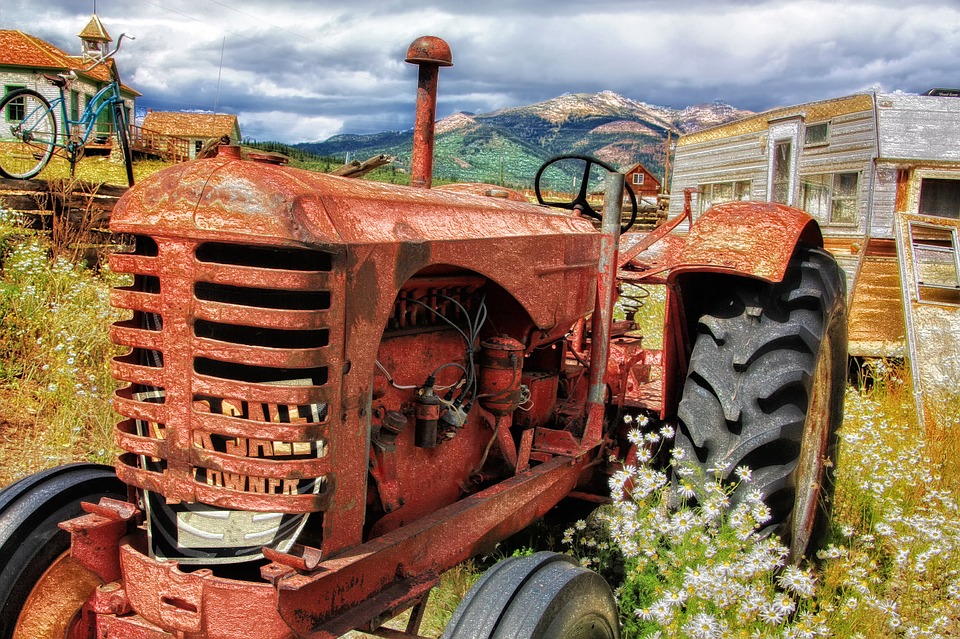
Free Range Report
